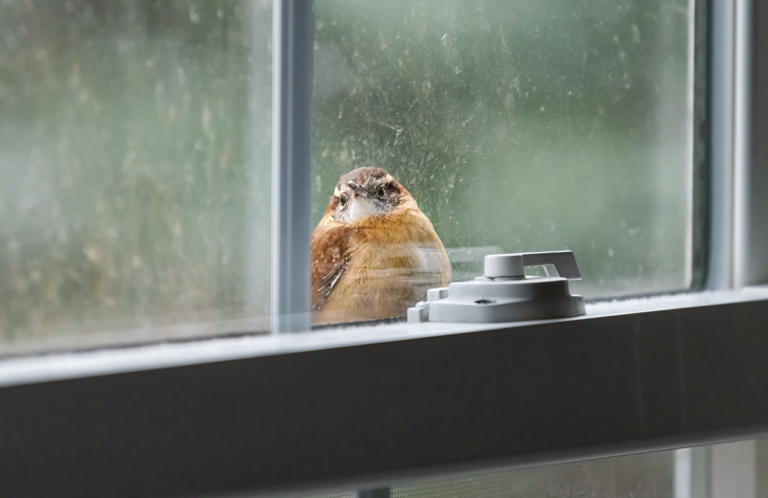ABC BirdTape is Back!

ABC BirdTape, an easy, affordable, and effective way to keep birds from hitting your windows, will soon be back on the market. American Bird Conservancy (ABC) has partnered with Feather Friendly® to resume offering this tape, which was first created in 2012 but has been unavailable for several years.
“We are excited to work with Feather Friendly to make BirdTape available again. It's a great option for those looking for an inexpensive solution that goes up quickly and lasts a long time,” said Chris Sheppard, Glass Collisions Program Director at ABC.

"Feather Friendly is pleased to partner with American Bird Conservancy in our shared values for avian species protection and preservation. This is a fantastic opportunity to provide even more bird collision deterrent options and educate the public about this preventable conservation issue, " said Paul Groleau, Vice President of Feather Friendly®.
Birds fly into windows because they do not perceive glass, and instead just see their habitat reflected back at them. This misperception has deadly results, killing hundreds of millions of birds each year. Some migratory songbirds are especially susceptible to deadly collisions. Luckily, there are easy steps that homeowners and businesses can take to make their windows visible to birds and reduce the threat of collisions.
A popular option for individual homes is to put some kind of visual marker on windows to signal to birds that there is a solid barrier, like paint or a series of decals. ABC BirdTape is a white or light blue vinyl material that can be adhered to windows either in long strips or in a pattern of squares. The tape lasts an average of four years, and is translucent enough to allow natural light through and not impact the view outside. Some people might prefer it to other options because it is easy to apply and customize.

For BirdTape to be most effective, it should be applied on the outside of the window with no more than two inches of space between each strip or square. That is the best way to make sure that birds like Dark-eyed Juncos won't just try to fly around or in between these visual cues, and will steer clear of the window entirely. The 3/4-inch version of the tape placed in diagonal lines two inches apart received a Threat Factor of 16 in ABC's test tunnel, meaning that only 16 percent of birds tested flew towards the material (unaltered glass typically has a Threat Factor closer to 100).
While sticking to a simple stripe or a checkerboard-like pattern is easiest, the more artistically inclined can also use the tape to create fun shapes. “BirdTape allows folks to get creative,” said Kaitlyn Parkins, Glass Collisions Program Coordinator for ABC. “As long as the two-by-two-inch spacing is maintained, you can make your design as simple or as complicated as you like while ensuring that your windows are bird-friendly.”
ABC BirdTape is available online at Feather Friendly's website. Any questions or assistance needed from Feather Friendly can be emailed to orders@featherfriendly.com. For other ideas and inspiration about how to reduce bird collisions, visit ABC's collisions webpage.
###
American Bird Conservancy (ABC) takes bold action to conserve wild birds and their habitats throughout the Americas. Inspired by the wonder of birds, we achieve lasting results for the bird species most in need while also benefiting human communities, biodiversity, and the planet's fragile climate. Our every action is underpinned by science, strengthened by partnerships, and rooted in the belief that diverse perspectives yield stronger results. Founded as a nonprofit organization in 1994, ABC remains committed to safeguarding birds for generations to come. Join us! Together, we can do more to ensure birds thrive.
Media Contact
Jordan Rutter
Director of Communications
media@abcbirds.org


















































